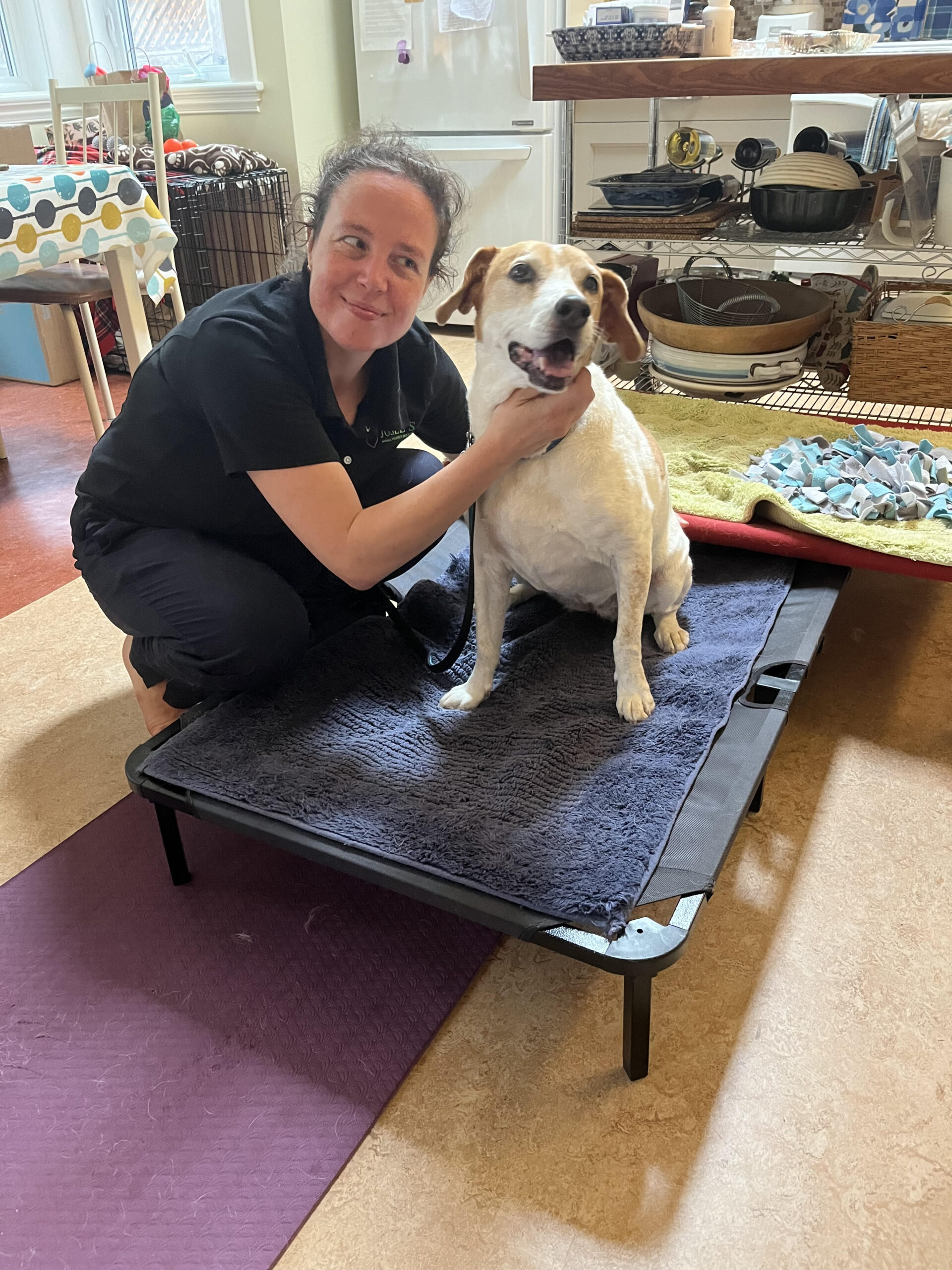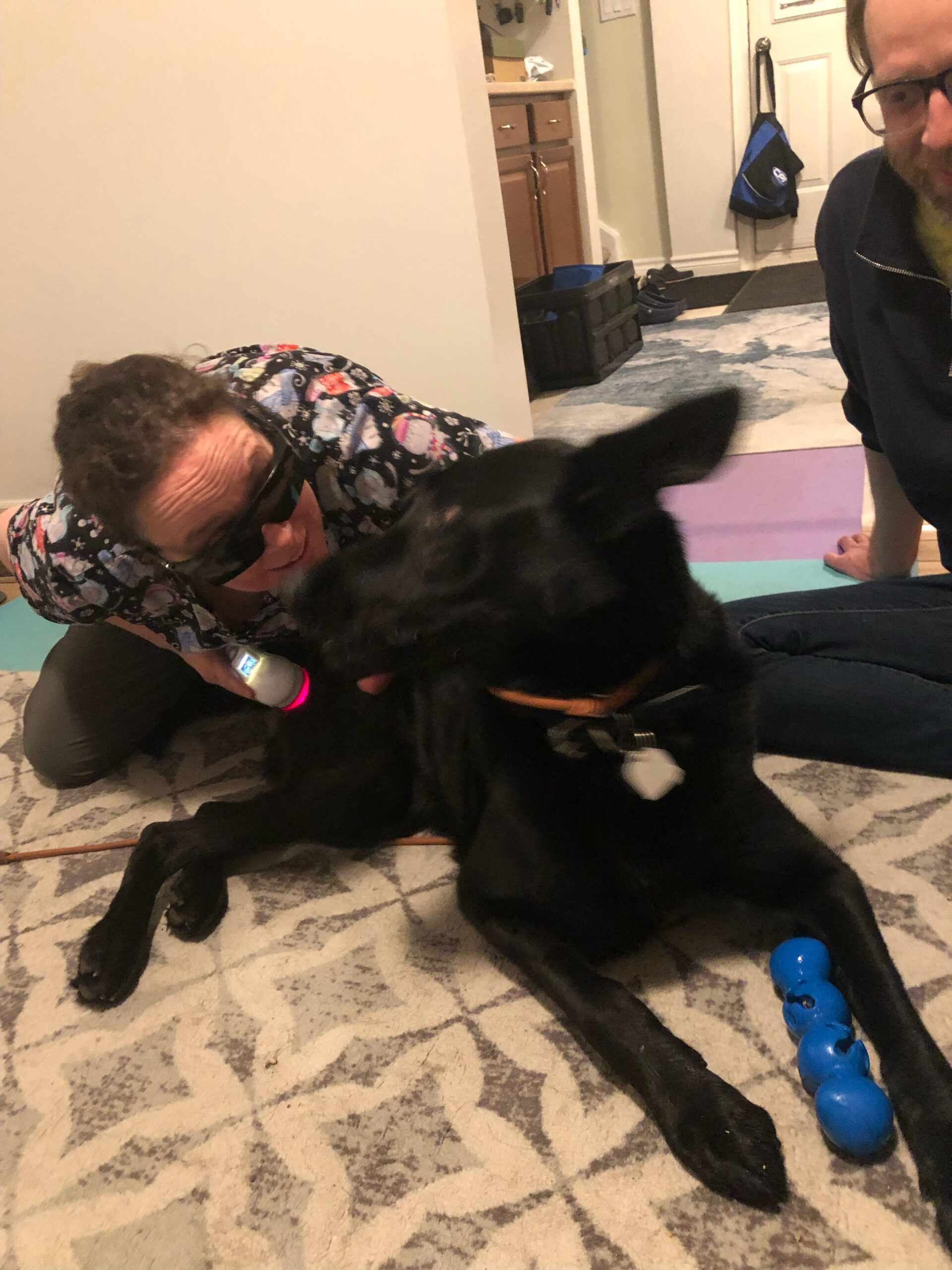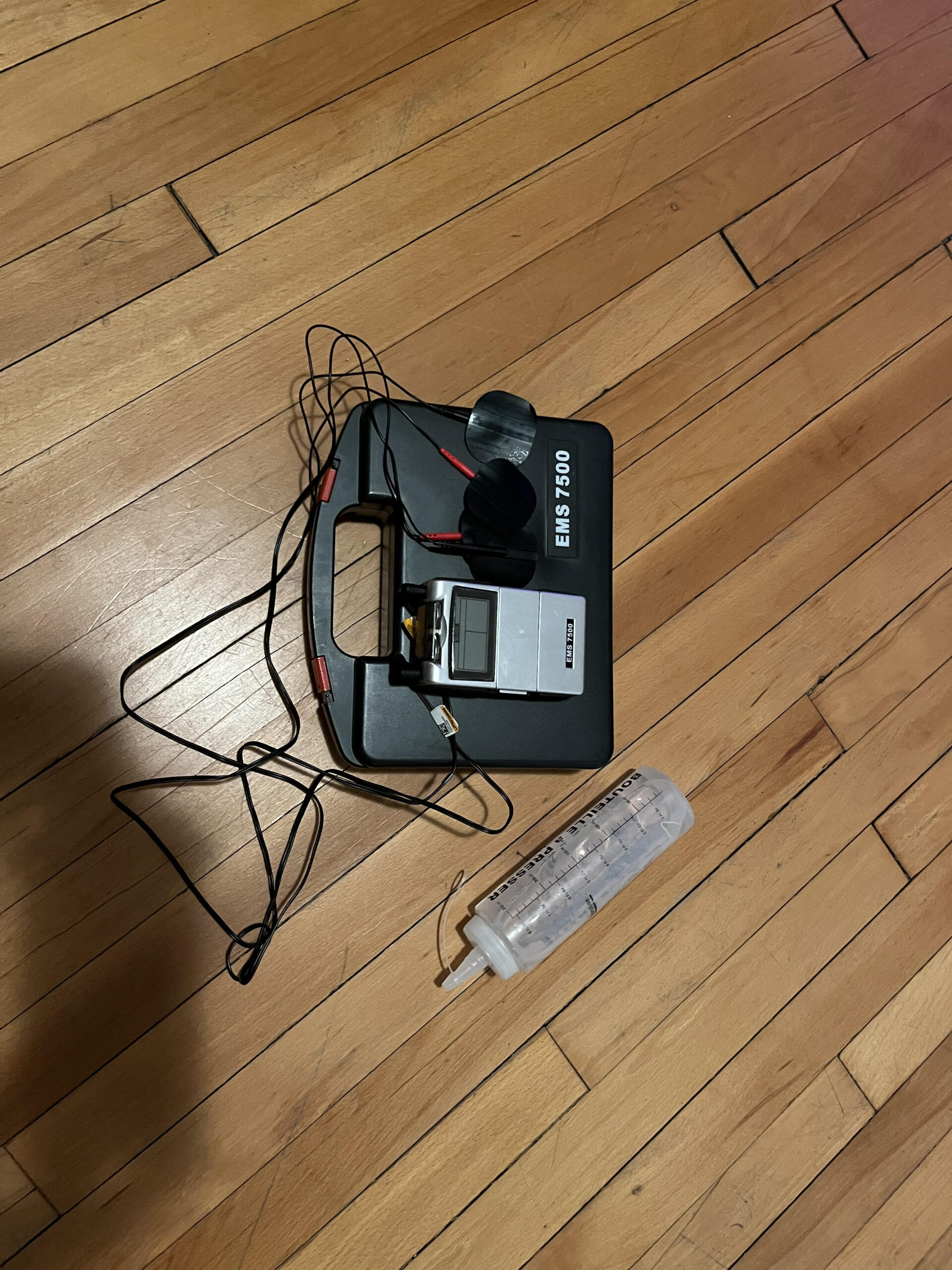About
Josée’s Animal Wellness Services

How I can help
Josée observes pets on a daily basis that could benefit from one or all the tools she has in her tool box as a CCRP (Certified Canine Rehabilitation Practitioner).
It helps alleviate pain, increase flexibility and strength, and thus help your pet live a better life.
Helps you and your beloved pet stay together while having the best quality of life. Yes, all of you! When animals are sick or have mobility issues it affects not only the pet but the whole family.
Let me help you, help them!
Benefits of physical rehab
-
Helps your pet get back to normal function, or at least as close as possible. Each case will have different outcomes and goals.
-
Helps with pain control, is part of a multi-modal approach and has fewer side effects than drugs.
-
Helps strengthen muscles and thus reduces the risk of injury or re-injury.
-
Increases Quality of Life.

Josée’s Toolbox
-
Her hands – Massage, PROM (passive range of motion) and to carry out Therapeutic exercises
-
Thermotherapy – heat and cryotherapy
-
Laser therapy
-
TENS (Transcutaneous Electrical Nerve Stimulator)
-
EMS (Electrical Muscle Stimulator)
Massage
-
Breaks the vicious cycle of pain and muscle tension.
-
Increases blood flow.
-
Improves oxygen supply and helps remove metabolic waste products.
-
Stimulates the release of endorphins thus resulting in pain relief.
-
Accelerates muscle recovery.
-
Increases venous and lymph return.
-
Mobilizes adhesions.
-
Improves cutaneous perception.
-
Promotes mental and physical relaxation.
-
Improves bonding between animals and humans.
Passive Range of Motion (PROM)
-
Helps re-educate your pet to use their limbs normally (or as close as possible – depending on the issue they are dealing with).
-
Most of these exercises are usually done with the animal lying down to help avoid strain and fatigue on the muscles.
Assisted and active therapeutic exercises
-
Helps re-educate the patient/limb(s) to normal motion with activity.
-
Assisted standing exercises.
-
Weight shifting/perturbation exercises.
-
Balance boards.
-
Side bending and cervical flexion and extension.
-
Bicycling movements (in lateral or standing position).
-
Exercise ball use.
-
Slow walks.
-
Stair climbing.
-
Sit-to-stand exercises.
-
Wheel barrowing.
-
Dancing.
-
Cavaletti rails.
Electrical Stimulation (ES)
ES is a very useful physical therapy and rehabilitation modality for treating various orthopedic and neurological diseases, especially those causing acute and chronic pain, or muscle atrophy. Low-frequency pulsed alternating currents are the most commonly used in therapeutic applications.
-
Transcutaneous electrical nerve stimulator (TENS): A form of neuromuscular electrical stimulator (NMES) used for pain relief.
-
Electrical muscle stimulator (EMS): Direct stimulation of the denervated muscle via its muscle fibers.
Indications:
-
Pain management, especially in response to arthritis, and spondylosis, after orthopedic surgery and nerve regeneration.
-
Fracture healing.
-
Muscle tension.
-
Prevention of muscle loss (atrophy).
-
Muscle strengthening.

Thermotherapy
Effects of superficial heat:
- Increases blood flow.
-
Muscle relaxation.
-
Pain relief.
-
Increases extensibility of fibrous tissues.
Effects of cryotherapy (cold):
- Vasoconstriction.
-
Decreases cellular metabolism.
-
Pain relief.
-
Reduction of muscle spasm.
Laser therapy
- Spectravet Therapeutic Laser
-
Low-level laser therapy is a form of phototherapy or light therapy.
-
Improves soft tissue healing.
-
Relieves both acute and chronic pain.
-
Reduction of inflammation.
-
Because of the low-power nature of low-level laser therapy the effects are biochemical and not thermal and cannot cause heating and thereby do not damage living tissue.

There is a time commitment and cost involved however we believe the benefits are worth it.
Looking forward to hearing from you!
About
Josée’s Animal Wellness Services

How I can help
Josée observes pets on a daily basis that could benefit from one or all the tools she has in her tool box as a CCRP ( Certified Canine Physical Practitioner).
It helps alleviate pain, increase flexibility and strength and thus help your pet live a better life.
Helps you and your beloved pet say together while having the best quality of life. Yes, all of you! When animals are sick or have mobility issues it affects not only the pet but the whole family.
Let me help you, help them!
Benefits of physical rehab
-
Helps your pet get back to normal function, or at least as close as possible. Each case will have different outcomes and goals.
-
Helps with pain control, is part of a multi-modal approach and has fewer side effects than drugs.
-
Helps strengthen muscles and thus reduces the risk of injury or re-injury.
-
Increases Quality of Life.

Josée’s Toolbox
-
Her hands – Massage, PROM (passive range of motion) and to carry out Therapeutic exercises
-
Thermotherapy – heat and cryotherapy
-
Laser therapy
-
TENS (Transcutaneous Electrical Nerve Stimulator)
-
EMS (Electrical Muscle Stimulator)
Massage
-
Breaks the vicious cycle of pain and muscle tension.
-
Increases blood flow.
-
Improves oxygen supply and helps remove metabolic waste products.
-
Stimulates the release of endorphins thus resulting in pain relief.
-
Accelerates muscle recovery.
-
Increases venous and lymph return.
-
Mobilizes adhesions.
-
Improves cutaneous perception.
-
Promotes mental and physical relaxation.
-
Improves bonding between animals and humans.
Passive Range of Motion (PROM)
-
Helps re-educates your pet to use their limbs normally (or as close to possible – depending on the issue they are dealing with).
-
Most of these exercises are usually done with the animal lying down to help avoid strain and fatigue on the muscles.
Assisted and active therapeutic exercises
-
Helps re-educate the patient/limb(s) to normal motion with activity.
-
Assisted standing exercises.
-
Weight shifting/perturbation exercises.
-
Balance boards.
-
Side bending and cervical flexion and extension.
-
Bicycling movements (in lateral or standing position).
-
Exercise ball use.
-
Slow walks.
-
Stair climbing.
-
Sit-to-stand exercises.
-
Wheel barrowing.
-
Dancing.
-
Cavaletti rails.
Electrical Stimulation (ES)
ES is a very useful physical therapy and rehabilitation modality for treating various orthopedic and neurological diseases, especially those causing acute and chronic pain, or muscle atrophy. Low-frequency pulsed alternating currents are the most commonly used in therapeutic applications.
-
Transcutaneous electrical nerve stimulator (TENS): A form of neuromuscular electrical stimulator (NMES) used for pain relief.
-
Electrical muscle stimulator (EMS): Direct stimulation of the denervated muscle via its muscle fibers.
Indications:
-
Pain management, especially in response to; arthritis, spondylosis, after orthopedic surgery and nerve regeneration.
-
Fracture healing.
-
Muscle tension.
-
Prevention of muscle loss (atrophy).
-
Muscle strengthening.

Thermotherapy
Effects of superficial heat:
- Increases blood flow.
-
Muscle relaxation.
-
Pain relief.
-
Increases extensibility of fibrous tissues.
Effects of cryotherapy (cold):
- Vasoconstriction.
-
Decreases cellular metabolism.
-
Pain relief.
-
Reduction of muscle spasm.
Laser therapy
- Spectravet Therapeutic Laser
-
Low-level laser therapy is a form of phototherapy or light therapy.
-
Improves soft tissue healing.
-
Relieves both acute and chronic pain.
-
Reduction of inflammation.
-
Because of the low-power nature of low-level laser therapy the effects are biochemical and not thermal and cannot cause heating and thereby do not damage living tissue.

There is a time commitment and cost involved however we believe the benefits are worth it.
Looking forward to hearing from you!
